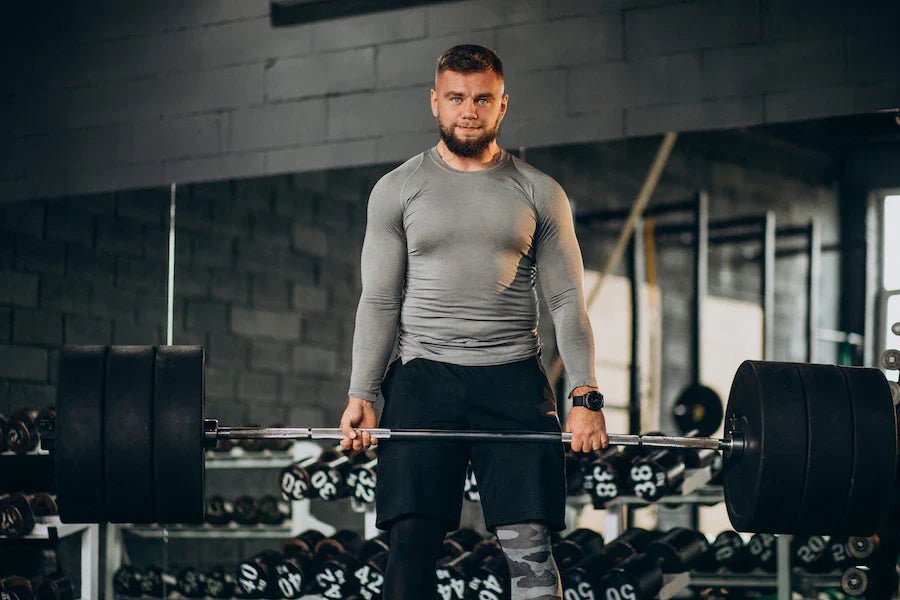Wrist pain is one of the fastest ways to stall your progress in calisthenics.
From push-ups to handstands, your wrists take a beating, and if they’re not strong and mobile, you’ll feel it.
The fix? Smart, consistent training.
Today, you’ll learn exactly how to strengthen your wrists for calisthenics with mobility drills, targeted exercises, and injury prevention tips, so your wrists can keep up with your goals.
Why Wrist Strength Matters in Calisthenics?
 Calisthenics demands a lot from your wrists.
Calisthenics demands a lot from your wrists.
Unlike traditional weight training, where wrists often stay in a neutral position, bodyweight exercises like handstands, push-ups, L-sits, and levers place your wrists in extended or loaded positions for prolonged periods.
Without proper preparation, this repetitive stress leads to:
- Chronic wrist pain
- Tendonitis or carpal tunnel syndrome
- Plateaus in progress due to instability
Building wrist strength and mobility not only reduces injury risk but enhances performance and endurance in high-skill movements.
Wrist Mobility for Calisthenics & Essential Warm-Up Drills
Before diving into strength work, it's essential to address wrist mobility for calisthenics. A solid warm-up primes the joints, improves blood flow, and prepares your ligaments and tendons for loading.
1. Wrist Circles
How to: Extend your arms in front of you, rotate your wrists in slow circles in both directions (clockwise and counterclockwise).
Reps: 20 each direction
Why: Promotes synovial fluid movement and improves range of motion.
2. Palm Pulses
How to: On all fours, place palms flat on the ground and gently rock forward so your wrists take load. Then lift palms slightly while keeping fingers grounded.
Reps: 15-20 pulses
Why: Gently loads the wrists while engaging finger and forearm muscles.
3. Wrist Flexor & Extensor Stretches
How to: Extend your arm, palm facing up or down, and use the opposite hand to gently pull back on the fingers to stretch the wrist.
Hold: 15-30 seconds each side
Why: Loosens tight forearm muscles that can restrict joint movement.
Pro Tip: Include wrist mobility in every warm-up routine, even on non-handstand days.
Best Wrist Strengthening Exercises for Calisthenics
Once mobility is addressed, the next step is to incorporate wrist strengthening exercises for calisthenics.
These drills target the muscles, tendons, and connective tissues that stabilize the wrist under bodyweight loads.
1. Wrist Push-Ups (From Knees or Toes)

How to: In a push-up position, rotate your hands so fingers point toward your knees and slowly lower yourself down.
Start on knees and progress to full plank.
Reps: 8-12
Why: Builds eccentric strength in wrist flexors and extensors.
2. Fingertip Push-Ups

How to: Perform push-ups balancing on your fingertips instead of palms.
Reps: Start with 5, work up to 15
Why: Trains intrinsic hand and forearm muscles while enhancing grip.
3. Resistance Band Wrist Curls
How to: Anchor a light resistance band, grip it with your palm up/down, and curl your wrist against tension.
Reps: 12-15 each side
Why: Isolates flexor and extensor muscles, building control and endurance.
4. Loaded Wrist Leans
How to: In a plank position on palms, shift your body weight forward slightly and hold.
Time: 15–30 seconds
Why: Builds endurance and prepares for handstand or planche holds.
Progressive Overload and Advanced Wrist Training
To keep progressing, apply the principle of progressive overload to wrist training. Just like building leg or back strength, your wrists need increased resistance and complexity over time.
Progressions to Try:
- Knuckle Push-Ups (protects wrists while training stability)
- Handstand Holds on Parallettes or Floor (gradually increase time)
- Wrist Roller with Weight Plate
- One-Arm Wrist Curls with slow tempo for control
Track your wrist workouts weekly and note improvements in pain reduction, range of motion, or load capacity.
Preventing Wrist Injuries in Calisthenics
Strong wrists are built over time, not overnight. To avoid injury:
- Warm up thoroughly: Never skip mobility drills.
- Use proper alignment: Don’t hyperextend or collapse through the wrist.
- Train forearm muscles: Balanced strength between flexors and extensors protects joints.
- Rest and recover: Tendons take longer to adapt than muscles.
If you experience chronic discomfort or sharp pain, reduce load and consult a physical therapist before resuming.
Make Wrist Training Non-Negotiable
Neglecting wrist care is a common mistake in the calisthenics world.
But with just 10–15 minutes of focused wrist work per session, you can prevent injury, improve form, and unlock advanced skills with confidence.
Strengthening your wrists for calisthenics isn’t optional, it’s foundational.




